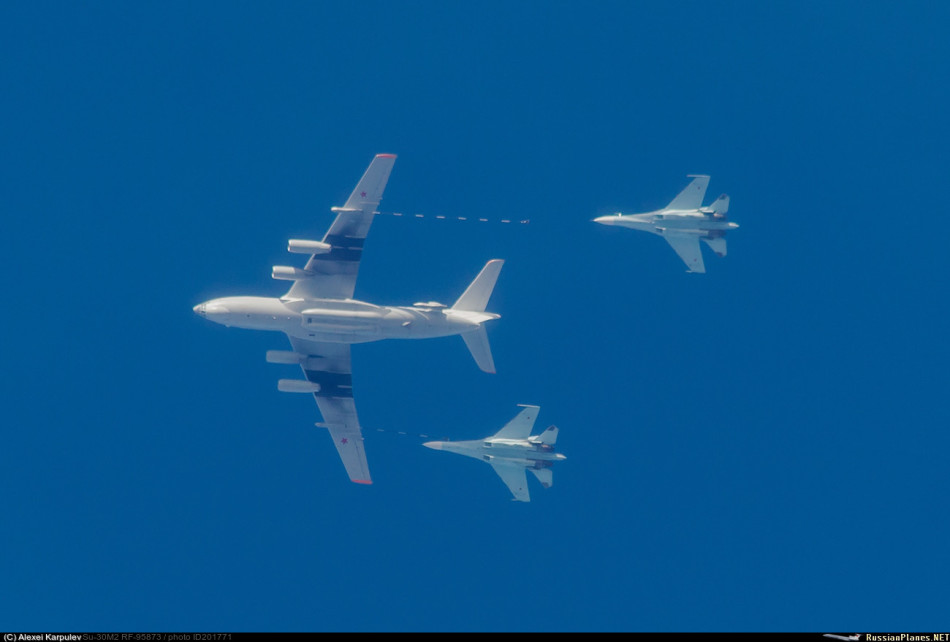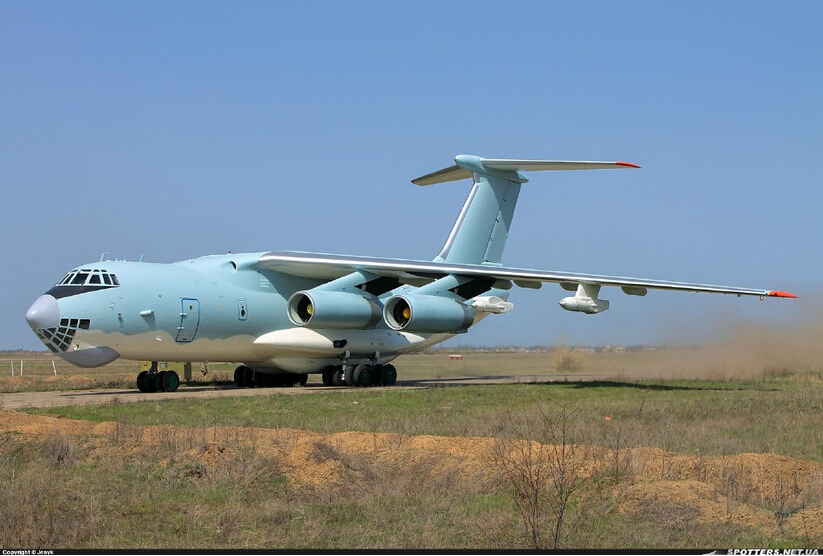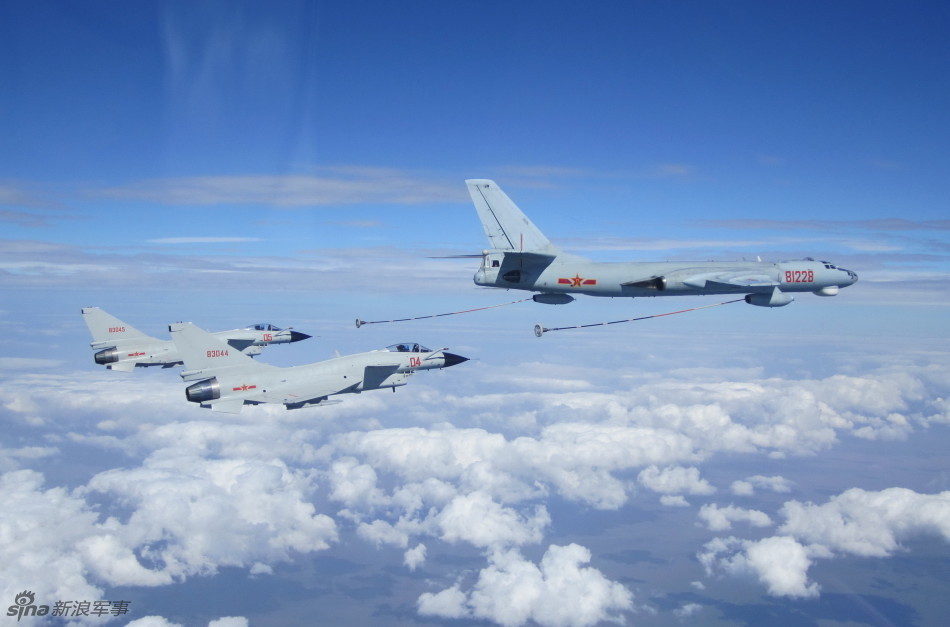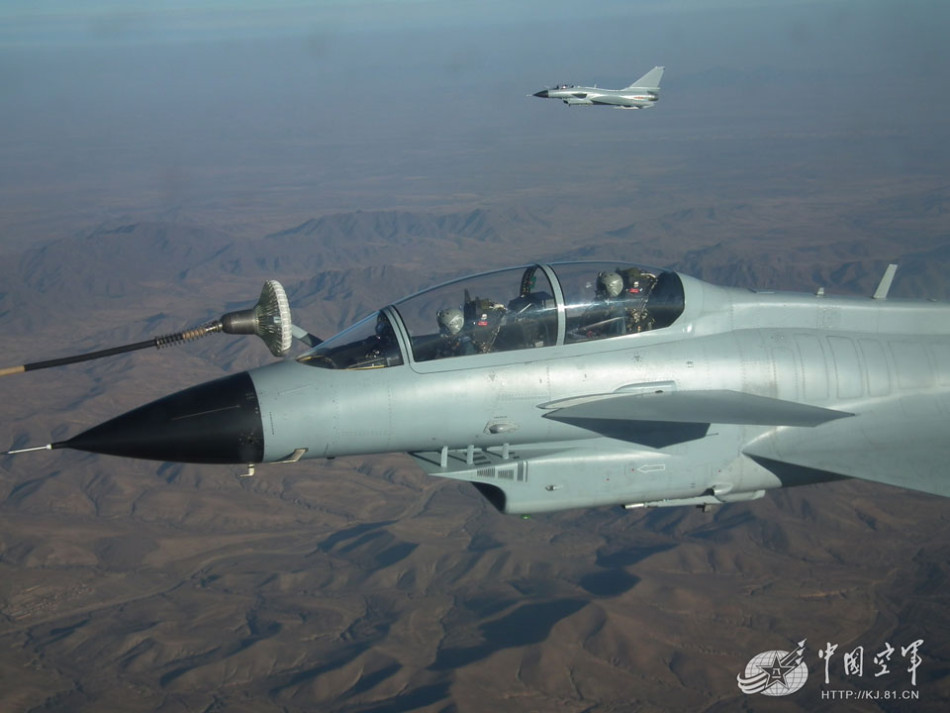This is another area of weakness that China need to address to
From East Pendulum
The Chinese aerospace company AVIC could start the development of a new tanker aircraft, if one believes in
, a subsidiary of AVIC designer and military aircraft as the bomber
H-6 or transport aircraft
Y-20 , on his collaborations with other electronic equipment manufacturer subsidiary of the same group, AVIC Chang Feng.
The text talks about the pooling of competences between the two entities and the creation of joint teams to address the "frontline" projects currently under development.
Three projects of this type have been specifically mentioned:
- The human-machine interface for a certain AWACS aircraft
- The mission management tactile display system for a certain refueling aircraft
- Pre-studies on civilian and military cockpits next generation
This second point is particularly interesting for several reasons. First, it is known that China's air-to-air refueling capability, whether the Air Force or the Chinese Navy, is very limited today.
A H-6U refueling aircraft
The country has so far twenty tanker aircraft
H-6U for its air force as well as some of
H-6DU for the navy. These two versions, developed from the H-6 bomber platform in the 1990s, are finding it increasingly difficult to adapt to the growing needs of the two corps, with equipment that goes and must go further and further.
The tanks to supply the other aircraft of these Chinese tanker planes contain only 18.5 tons of kerosene, and this number even drops to 10 tons if the range of the tanker is 2,200 km. These quantities are barely sufficient to power in a release between two and four fighter type
J-10A only, or up to six aircraft
J-8D , for example.
This relatively small refueling capacity significantly reduces the flexibility of deployment and especially the projection capacity of Chinese devices. The H-6U and the H-6DU are therefore a first generation solution, but are no longer adapted to the current needs of the Chinese Army.
One can see how the J-10A and J-10S refuel in flight with an H-6U during an interception-refueling training, in a video broadcast in 2014 by local television CCTV-13:
Then the fact that the Chinese aircraft refuellers are not compatible with the aircraft "Sukhoi-like" as the
Su-30MKK , the
J-11D , the
J-15 or the
J-16 , also poses a concern.
Three
IL-78 Midas were thus acquired by the Chinese in Ukraine and at least one of them has participated this year in an exercise in the army of the Chinese air in the West Pacific, which involved a forty Chinese military aircraft and especially muscular reactions caused some Japanese and American side (see our article "
").
Although its supply capacity has tripled compared to the H-6U and H-6DU - 60 tons of fuel oil compared with only 18.5 tons - the very small number of equipment, the acquisition now becoming difficult, and especially the lack of compatibility Of the IL-78 to refuel aircraft of Chinese design, make the IL-78 still remains a solution "Stop Gap" for the moment and can not be the long-term supply tanker for the Chinese army.
There is therefore a real need to develop a new tanker plane.
An IL-78 refueling with a Chinese Su-30MKK
Finally, unlike a decade ago, the AVIC Group is now able to design and build "large" platforms that can be used as a refueling aircraft, starting with the Y-20, which is precisely designed by the Institute 603.
The latter also participated in the development of
C919 , and is certainly also involved in that of
C929 , which are technically qualified to become a feeder platform. But these two programs will not see the light of day for a few years, and therefore do not correspond to China's short- and medium-term needs.
The project evoked in the article of the Institute 603 could thus be a refueling version based on the Y-20, whose design is completely mastered by AVIC.
The Y-20 is a military transport aircraft capable of projecting up to 66 tons of equipment over a distance of 4 500 km, or 40 tons over 7 800 km. If we take the necessary mass of equipment related to refueling, the capacity of the tanker version of Y-20 could be at least equivalent to that of IL-78
Midas , with in addition a great advantage that production no longer depend Than the Chinese themselves.
It is perhaps for these three reasons that when a strange Y-20 was seen at Yanliang in early December, some observers in China immediately thought that it was a new supply of Y -20,
.
Of course, with the few elements mentioned in the article of the 603 Institute, it is still (too) early to say with certainty that the AVIC group actually began working on such a refueling aircraft based on the Y- 20. But we know at least that the need is real, and at the technological level the basic bricks already exist. The question is not whether such a program will come into being, but when.
Another possible interpretation of the text is that the 603 Institute and AVIC Chang Feng would work on an improved version of the existing H-6U / H-6DU, which consists in optimizing the mission management system of the latter and thus making "fine Tuning ".
But these devices are old, physical constraints are present and can not be solved solely at the level of the mission management system, such an optimization would not be financially profitable and technically justified.
Henri K.










